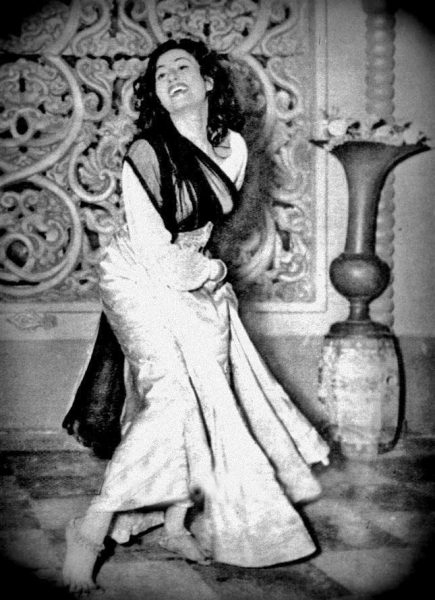
This year, the New York Times have marked International Women’s Day with tributes to fifteen remarkable women hitherto overlooked in their obituary section. Aisha Khan chose Madhubala, the Bollywood actress likened to an Indian Marilyn Monroe. (A 1951 article in LIFE magazine described her, not inaccurately, as ‘the biggest star in the world.)

“It was probably the first ghost story in Indian cinema. A bewildered young man in a mansion chasing glimpses of an ethereal, veiled beauty. The movie, Mahal, was a huge success, making the lead actress, Madhubala, who was barely 16, a superstar overnight.
Madhubala’s tragic turn in the film as an enigmatic young woman in search of love seemed to foreshadow her own glittering but short life. She died 20 years later as an icon of beauty and tragedy — her dazzling career, unhappy love life and fatal illness more dramatic than any movie she starred in.
Asked once to describe herself, Madhubala said she was so young when she entered the ‘maze’ of the film industry — she made her debut at 9 — that she had lost herself.
‘When you have forgotten yourself, what can you tell people about yourself?’ she once said.
Besotted poets called her ‘a living Taj Mahal,’ but Madhubala’s radiant beauty was not cold or forbidding. Her dreamy eyes, vivacious smile and mischievous laughter gave her a girl-next-door appeal.
She has been compared to Marilyn Monroe: the smoldering looks, the short career, the tragic end. ‘There was a remarkable similarity in the soft vulnerability of their faces,’ writes Khatija Akbar in her biography of Madhubala. ‘The same abandon to their laughter, head thrown back, that same incandescent glow.’
Frank Capra Jr., visiting Bombay for a film festival in 1952, was said to have offered her a job in Hollywood. But Madhubala’s father, who controlled her career, forbade it.
Despite her success and the breadth of her work, Madhubala’s acting skills were still underappreciated. She never won any awards, even for her biggest hits.
She was born with a ventricular septal defect, a hole in her heart, diagnosed after she began working. There was no treatment for her condition, and she continued her punishing pace, completing more than 70 films in her short career. She told a friend: ‘No sooner had I learned what I was doing, God said, Enough.’
Madhubala was uninhibited for an Indian actress of that time. She was playful and flirtatious, and made news for her dalliances. Tarana (Anthem, 1951) paired her with the star Dilip Kumar, who played a doctor who fell for Madhubala’s feisty village girl. She was immediately smitten with Kumar, 10 years her senior, and reportedly sent him a rose, the beginning of a long romance.
They had been eager to marry, but Madhubala’s father had set conditions, including that they star in movies he would produce. Kumar demanded that she choose between him and her father. She chose her family. An ugly lawsuit over another movie hastened their breakup.
In 1960, the year Mughal-e-Azam was finally released, she married her frequent co-star Kishore Kumar, a talented singer. While their pairing in a string of comedies was cinema gold, offscreen the two were quickly estranged.
Madhubala made a few more hit movies, but her health deteriorated rapidly, and she spent her last years at home, out of the public eye. In her final days, according to her sister, Madhubala would say: ‘I want to live. Please God, let me live.’ She died on Feb. 23, 1969, nine days after her 36th birthday.”



